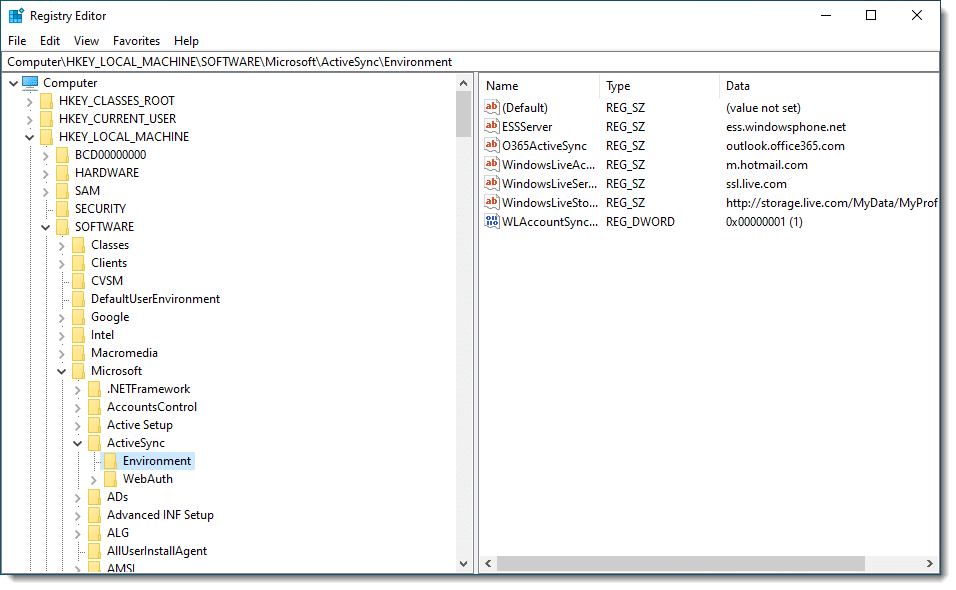Don’t hold your breath.

Contrary to popular opinion, the registry isn’t broken.
The registry is just a structured database of information — nothing more, nothing less. The trouble comes because it’s very complex, and not everyone uses it properly.

The registry
The Windows registry is a structured database essential for storing diverse information. It has robust security and features like portability and multi-user accounts. Its complexity, not its structure, leads to errors. Applications can use alternatives, but the registry remains indispensable because of the intricate needs it addresses.
Why do we have a registry?
Complicated programs like Windows need a place to store information. Providing a common database makes tremendous sense; otherwise, each application would have to reinvent the wheel, bringing along its own storage technology, and each of them being different, of course.
This is particularly true when you factor in things like security ramifications. The registry provides an incredibly robust security model down to the individual entry level. That keeps information private when it needs to be.
It also enables features that most home users don’t care about but corporations do: things like portability, migrating your settings from machine to machine automatically as you move around your corporate network, and having multiple user accounts on a single machine share some settings but keep others private.
Help keep it going by becoming a Patron.
The registry’s weakness is its complexity
There is a structure to the registry, but it appears completely ad hoc. Imagine if you had a file folder called “Documents” where you expect your documents to be, except there’s another folder called Documents over there, and over there, and over there. They each hold documents, and while there’s an intended organization, not everyone follows it.
Even when it’s clear, there’s nothing to force application writers to use it in the correct way or with the correct structure.
Because it’s so robust, the programming interface to the registry is correspondingly complex and easy for application programmers to get it wrong. The wrong items are placed in the wrong location in the database, or not removed when an application is uninstalled, or many other issues. That’s where registry-related problems start.
There’s nothing that forces an application to use the registry. Programs that want to can certainly use .ini files — a plain text file you can open and even modify using programs like Notepad — the most commonly suggested alternative. Windows itself needs something more intricate because of all the different and complex scenarios and needs it’s attempting to address.
Many applications choose to use the registry because it solves a problem, even if it is complex.
It’s really about what’s in the registry
The bottom line is that it isn’t the registry that’s at fault; it’s the data that it contains that can have problems. The data can be wrong no matter how it’s stored (whether in .ini files or otherwise). The problems being solved here are complex — much more complex than most people realize. In many cases, simpler alternatives just don’t cut it.
Software writers are free to avoid the registry if they want to, and they can meet their goals without it. I know of many applications that do.
But don’t expect the registry to ever go away.
Do this
Subscribe to Confident Computing! Less frustration and more confidence, solutions, answers, and tips in your inbox every week.
I'll see you there!





I just watched your video about the Windows Registry. Why is it that Windows is such a bloated operating system compared to Linux and MacOS? Is there a valid reason that Microsoft just keeps adding more bloat with every new version of Windows? Could Microsoft reinvent Windows in a way that makes it smaller and faster while still keeping compatibility? Is this a matter of Microsoft engineers just being lazy or too smug to abandon the status quo?
It’s not all Microsoft’s fault. For example, programs are supposed to remove their data from the registry when they are uninstalled. Some don’t do so or don’t do it thoroughly and leave remnants behind. Microsoft often gets the blame for things that aren’t their fault. People are blaming Windows dor the Crowdstrike worldwide crash when the problem was caused by a bug in a Crowdstrike update.
“The registry provides an incredibly robust security model down to the individual entry level”
“security” is not the proper word when it comes to the registry.
Try “versatility”. Anyone can change anything in the registry with little effort. And everyone knows it.